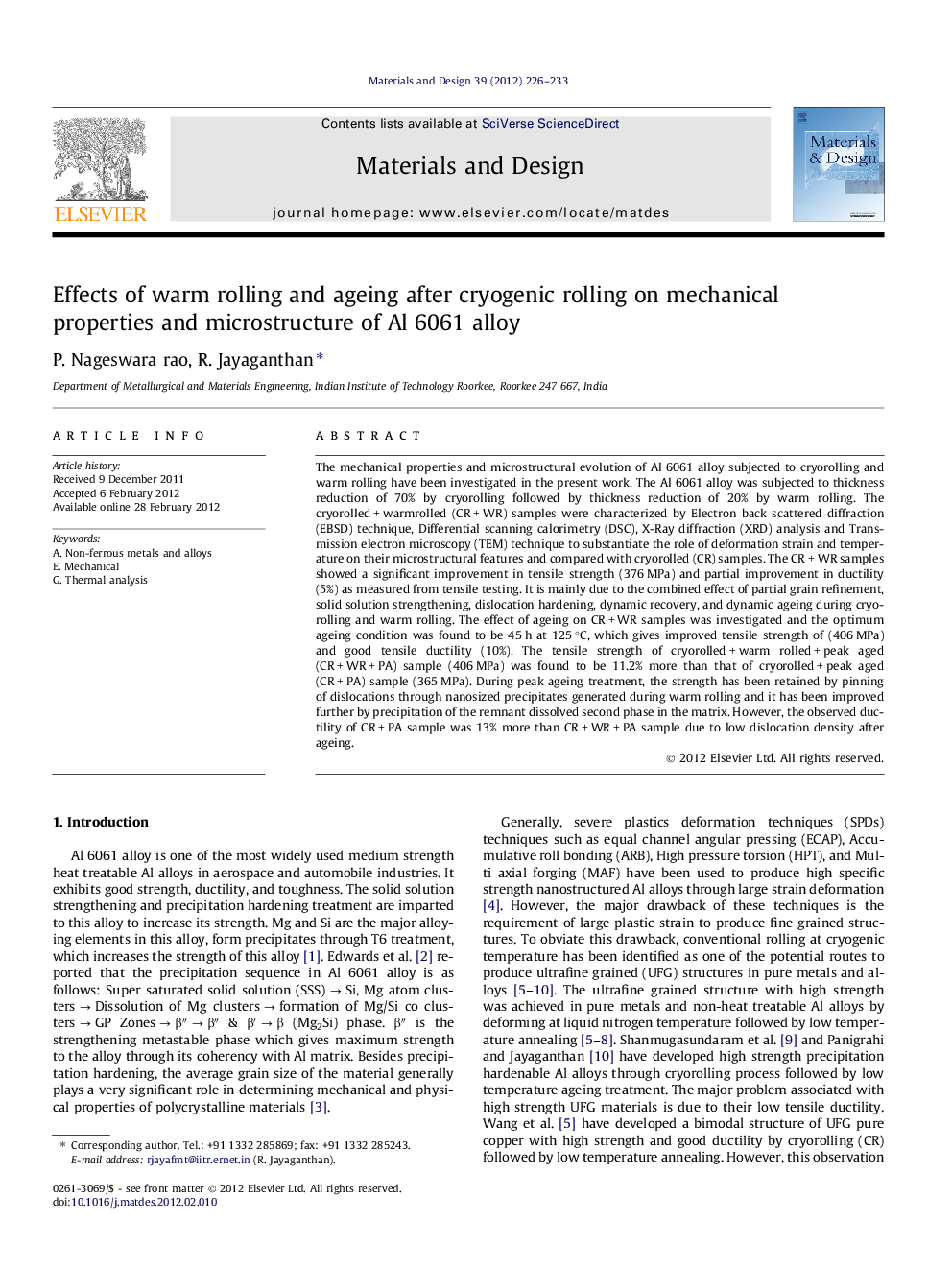| Article ID | Journal | Published Year | Pages | File Type |
|---|---|---|---|---|
| 830668 | Materials & Design (1980-2015) | 2012 | 8 Pages |
The mechanical properties and microstructural evolution of Al 6061 alloy subjected to cryorolling and warm rolling have been investigated in the present work. The Al 6061 alloy was subjected to thickness reduction of 70% by cryorolling followed by thickness reduction of 20% by warm rolling. The cryorolled + warmrolled (CR + WR) samples were characterized by Electron back scattered diffraction (EBSD) technique, Differential scanning calorimetry (DSC), X-Ray diffraction (XRD) analysis and Transmission electron microscopy (TEM) technique to substantiate the role of deformation strain and temperature on their microstructural features and compared with cryorolled (CR) samples. The CR + WR samples showed a significant improvement in tensile strength (376 MPa) and partial improvement in ductility (5%) as measured from tensile testing. It is mainly due to the combined effect of partial grain refinement, solid solution strengthening, dislocation hardening, dynamic recovery, and dynamic ageing during cryorolling and warm rolling. The effect of ageing on CR + WR samples was investigated and the optimum ageing condition was found to be 45 h at 125 °C, which gives improved tensile strength of (406 MPa) and good tensile ductility (10%). The tensile strength of cryorolled + warm rolled + peak aged (CR + WR + PA) sample (406 MPa) was found to be 11.2% more than that of cryorolled + peak aged (CR + PA) sample (365 MPa). During peak ageing treatment, the strength has been retained by pinning of dislocations through nanosized precipitates generated during warm rolling and it has been improved further by precipitation of the remnant dissolved second phase in the matrix. However, the observed ductility of CR + PA sample was 13% more than CR + WR + PA sample due to low dislocation density after ageing.
► Mechanical properties and microstructural evolution of cryorolled and warm rolled Al 6061 alloy were investigated. ► The CR + WR samples showed a significant improvement in tensile strength (376 MPa) and in ductility (5%). ► The peak aged samples of CR + WR samples exhibited improved tensile strength of (406 MPa) and tensile ductility (10%). ► The tensile strength of CR + WR + PA sample (406 MPa) was 11.2% more than that of CR + PA sample (365 MPa).
